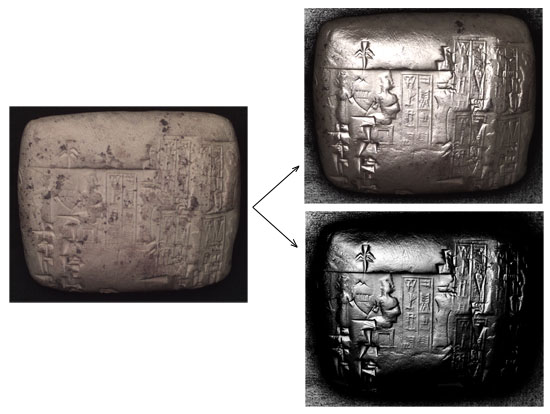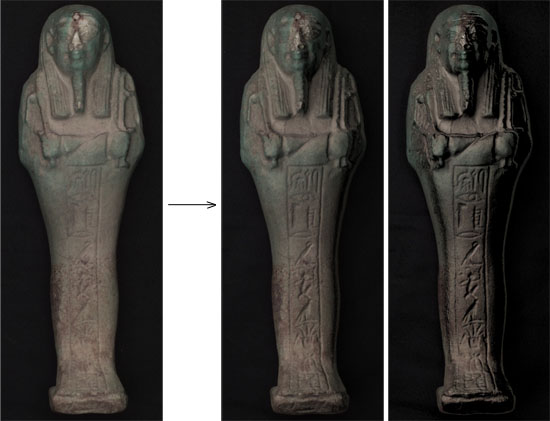|
Once the appearance of a surface is acquired with reflectance imaging, the reflectance properties can be transformed to make surface detail more visible. Two methods are particularly useful:
Specular enhancement
By capturing the appearance of a diffuse object under varying lighting conditions, per-pixel surface normals can be estimated by finding the lighting direction that maximizes pixel brightness. These normals can be used to relight the surface adding synthetic specular highlights.

Specular enhancement example
Diffuse gain
Diffuse objects have a slowly varying change in surface appearance as a function of lighting direction. Diffuse gain increases the curvature of each per-pixel reflectance function (the second derivative), keeping the estimate of the surface normal fixed. There is no direct physical analog of this transformation.

Diffuse gain example
Directly experiment with specular enhancement and diffuse gain technologies by downloading the tools, or using
Java based examples at
HP's Antikythera Mechanism Relighting Page,
HP's Interactive Relighting Page or
Cultural Heritages
PTM demo page.
Related papers and links
» Siggraph 2001 paper describing reflectance transformation (4.14MB, .PDF file)
» Reflectance Transformation Technical Report
» Palaeontologia Electronica paper (679KB, .PDF file)
» Palaeontologia Electronica web presentation
» West Semitic Research project using reflectance transformation
» Tom Malzbender
» Dan Gelb
|
